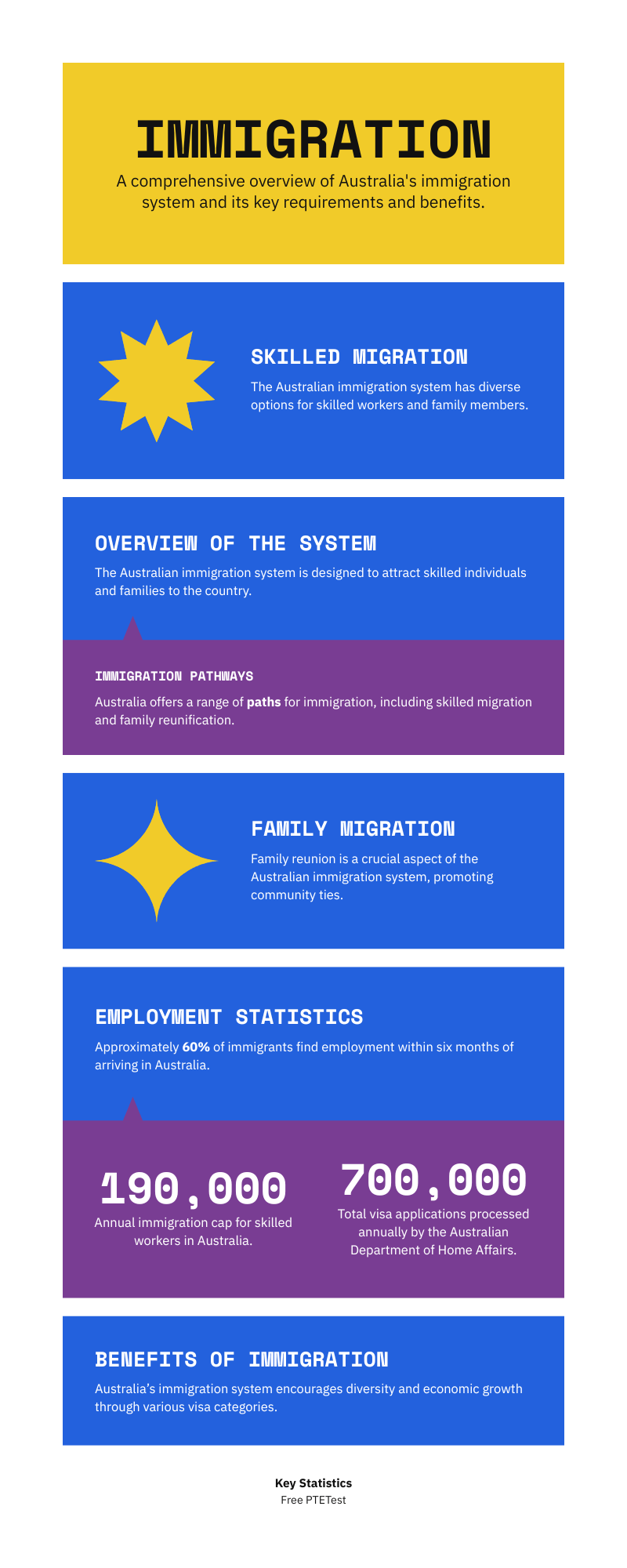Australian Immigration System: The Core Skills Occupation List (CSOL) and the Skills in Demand (SID) Visa – Core Skills stream represent pivotal elements of Australia’s evolving skilled migration framework.
Launched on December 7, 2024, this system has been designed to address critical labor shortages while aligning immigration policies with the nation’s economic priorities.
As of September 2025, significant updates have been implemented to enhance the program’s responsiveness to global and domestic workforce dynamics.
These include an expansion of the CSOL to 472 occupations, the introduction of a digital application portal for faster processing, and revised salary thresholds to reflect inflation and market conditions.
The CSOL now consolidates and modernizes previous occupation lists, identifying high-demand roles across industries such as healthcare, technology, construction, and renewable energy.
Paired with the Core Skills stream of the SID visa, it enables approved employers to sponsor skilled foreign workers, offering streamlined pathways to permanent residency.
This framework is dynamic, with regular reviews by Jobs and Skills Australia (JSA) to ensure it adapts to emerging needs, such as the growing demand for green technology experts and digital infrastructure specialists.
In essence, the Core Skills Visa pathway under the SID program targets occupations essential for Australia’s economic growth. It attracts workers with vital skills, ensuring they contribute to key sectors while providing opportunities for long-term settlement.
For applicants, meeting the requirements involves demonstrating relevant qualifications, experience, and English proficiency—areas where resources like freeptetest can be invaluable for preparation.
This article delves into the CSOL and SID Visa Core Skills stream, exploring their structure, eligibility, benefits, and the latest 2025 updates.
Understanding the Core Skills Occupation List (CSOL)
The Core Skills Occupation List (CSOL) is a comprehensive, consolidated list of occupations introduced by the Australian Government to simplify and modernize the skilled migration process.
Effective from December 7, 2024, the CSOL replaced outdated lists like the Skilled Occupation List (SOL) and Consolidated Sponsored Occupation List (CSOL), reducing complexity and enhancing transparency.
As of September 2025, the list has been expanded to include 472 occupations, up from the initial 456, incorporating new roles in emerging fields such as artificial intelligence ethics consultants, sustainable energy engineers, and cybersecurity analysts.
This expansion reflects JSA’s latest labor market analysis, which identified gaps in sectors affected by technological advancements and climate change initiatives.
The CSOL’s primary purpose is to identify occupations experiencing genuine shortages, allowing employers to sponsor skilled migrants efficiently.
It is developed through rigorous consultations with industry stakeholders, unions, and government agencies, ensuring it mirrors real-time economic demands. Unlike previous lists, the CSOL is not capped in terms of the number of occupations, providing greater flexibility.
There are no limits on visa grants per occupation, as approvals depend on employer nominations rather than fixed quotas. This approach fosters a more responsive migration system, where occupations can be added or removed based on annual reviews.
Key sectors covered in the updated CSOL include:
- Healthcare and Social Assistance: Roles such as registered nurses, aged care workers, and allied health professionals like physiotherapists and occupational therapists. The 2025 updates added specialized positions in mental health support, responding to post-pandemic needs.
- Information and Communication Technology (ICT): Software developers, data scientists, and network architects. New additions include AI machine learning specialists and blockchain developers, reflecting the digital economy’s growth.
- Construction and Infrastructure: Electricians, plumbers, civil engineers, and project managers. Updates incorporate roles in sustainable building practices, such as green architects and renewable energy installers.
- Education and Training: Teachers in STEM subjects, vocational trainers, and early childhood educators. The list now includes digital literacy instructors to address educational technology integration.
- Agriculture and Food Production: Farm managers, agronomists, and food technologists. 2025 expansions cover precision farming experts and sustainable agriculture consultants.
- Manufacturing and Engineering: Mechanical engineers, welders, and production managers. New entries focus on advanced manufacturing, like robotics technicians.
The CSOL is based on the Australian and New Zealand Standard Classification of Occupations (ANZSCO) 2022, ensuring standardization. Its dynamic nature means it undergoes quarterly reviews, with major updates announced annually.
For instance, the September 2025 revision added 16 new occupations while removing four that no longer face shortages, based on JSA data showing improved domestic supply in those areas.
The Skills in Demand (SID) Visa – Core Skills Stream
The Skills in Demand (SID) Visa, particularly its Core Skills stream, is the primary visa pathway linked to the CSOL. Replacing the Temporary Skill Shortage (TSS) visa (Subclass 482), the SID Visa was introduced to create a more flexible, employer-driven migration system.
The Core Skills stream targets mid-level skilled workers in CSOL-listed occupations, allowing them to fill roles where Australian labor is insufficient.
Key features of the Core Skills stream as of 2025:
- Visa Duration and Flexibility: Valid for up to 4 years, with extensions possible. Visa holders can change employers within the same occupation or sector after 180 days, provided the new employer is approved. This is a significant update from 2024, reducing the initial lock-in period from 365 days to promote worker mobility.
- Salary Threshold: Applicants must receive a minimum annual salary of AU$75,200 (updated from AU$73,150 in 2024 to account for wage growth and inflation). This threshold is indexed annually and ensures fair pay aligned with Australian standards.
- Employer Sponsorship: Nominations must come from approved Australian employers who have conducted labor market testing to prove no suitable local workers are available. The 2025 updates introduced a public register of approved sponsors, enhancing transparency and reducing exploitation risks.
- Pathway to Permanent Residency: After 2 years (reduced from 3 in 2024 for high-demand occupations), eligible holders can apply for permanent residency via the Employer Sponsored Visa (Subclass 186) or Skilled Independent Visa (Subclass 189), provided they meet points-tested criteria.
- Family Inclusion: Immediate family members (spouse, dependent children) can join, with work and study rights. Updates in 2025 extended dependent child age limits to 25 for full-time students.
The SID Visa also includes other streams:
- Specialist Skills Stream: For high-earning professionals (salary over AU$140,000, up from AU$135,000 in 2024) without an occupation list restriction, targeting executives and innovators.
- Essential Skills Stream: For lower-paid roles under AU$75,200, with sector-specific focus (e.g., aged care) and stricter oversight to prevent abuse.
- Labour Agreement Stream: For negotiated agreements in niche industries, often used for humanitarian or regional needs.
Compared to these, the Core Skills stream offers a balanced approach for mid-skilled workers, emphasizing CSOL alignment.

Eligibility Requirements for the SID Visa Core Skills Stream
To qualify for the Core Skills stream, applicants must satisfy several criteria, updated for 2025 to streamline applications:
- Occupation: Must be on the CSOL and nominated by an approved employer.
- Qualifications and Experience: Typically, a relevant Bachelor’s degree or equivalent (e.g., vocational diploma for trades), plus 1–5 years of post-qualification experience. Skills assessments are required for most occupations, conducted by bodies like VETASSESS or Trades Recognition Australia. The 2025 updates waived assessments for certain high-demand roles, like nurses, to expedite processing.
- English Proficiency: Minimum IELTS 5.0 overall (or equivalent, e.g., PTE 42), with no band below 5.0. Exemptions apply for native English speakers or those with 5 years of English-medium education. Freeptetest can help applicants prepare for these tests through practice modules.
- Age and Health: Under 45 years at application (waived for exceptional skills), and meet health and character checks, including police clearances.
- Employer Obligations: The sponsoring employer must pay the Skilling Australians Fund levy (updated to AU$3,000–5,000 per visa year) and comply with fair work conditions.
Applications are lodged online via ImmiAccount, with processing times averaging 21 days for complete submissions—a 10% improvement from 2024 due to digital enhancements.
Differences from Previous Occupation Lists
The CSOL marks a departure from earlier lists like the Medium and Long-term Strategic Skills List (MLTSSL) and Short-term Skilled Occupation List (STSOL):
- Consolidation: One list instead of multiple, reducing confusion.
- No Prioritization or Caps: Unlimited visas per occupation, unlike quota-limited previous systems.
- Inclusion Criteria: Based on JSA data, considering retention rates, graduate pipelines, and salaries—more data-driven than before.
- Broader Scope: 472 occupations (2025) versus 212 in the old MLTSSL, including emerging roles like climate adaptation specialists.
- Dynamic Updates: Quarterly reviews versus infrequent revisions, ensuring relevance.
- Migration Suitability Focus: Emphasizes long-term workforce integration, not just immediate shortages.
These changes make the system more employer-friendly and adaptable.
Criteria for Inclusion on the CSOL
Occupations are selected using two main criteria:
- JSA Skills Priority List: Derived from business surveys, economic data, and stakeholder input, identifying shortages.
- Migration Suitability: Assesses migration’s effectiveness in filling gaps, factoring in migrant retention (e.g., 80%+ stay in role), sponsored visa holders’ workforce share, domestic training pipelines, and market salaries (above median for inclusion).
The 2025 review added environmental sustainability as a factor, prioritizing green jobs.
Main Benefits of the CSOL and SID Visa Core Skills Stream
The updated framework offers numerous advantages:
- Simplification: Single list and streamlined visa process reduce administrative burdens.
- Labor Market Alignment: Targets genuine shortages, boosting productivity in key sectors.
- Flexibility: Easier employer changes and no visa caps enhance worker mobility.
- Permanent Residency Pathway: Clear routes encourage long-term contributions.
- Economic Impact: Fills 100,000+ roles annually, supporting growth in healthcare (20% of CSOL) and tech (15%).
- Transparency: Public sponsor register and annual indexing prevent exploitation.
- Inclusivity: Broader occupations include trades and laborers, diversifying migration.
For applicants, FreepPteTest aids in English preparation, a key requirement.
The CSOL now lists 472 occupations, simplifying skilled migration. The SID Visa Core Skills stream enables employer sponsorship for these roles, with a AU$75,200 salary threshold, 4-year validity, and PR pathways. Updates in 2025 enhance digital processing and include emerging sectors.



